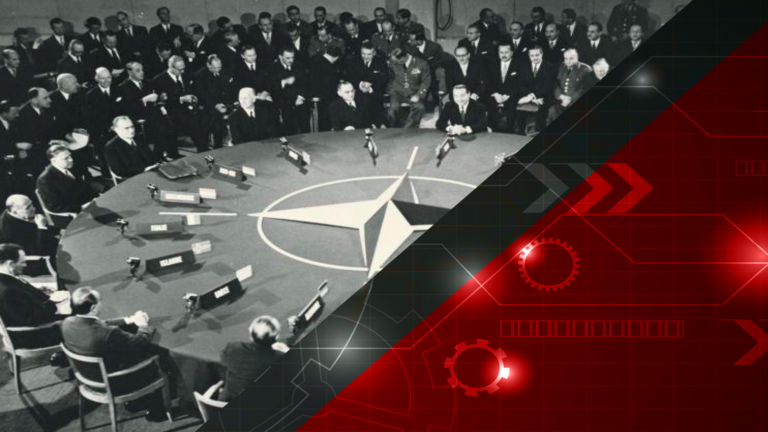
Does NATO have a future?
The North Atlantic Treaty Organization, an alliance of Western nations formed largely as an attempt to stymie the expansion of the Soviet Union into Europe, marked its 75th anniversary on April 4.
The Soviet Union and its Communist Party have since collapsed in Russia, but NATO remains, with an additional 20 members now onboard the organization. Sweden is its most recent member, having officially joined March 7.
The usefulness and effectiveness of NATO in the post-Cold War era has been cause for strenuous debate. Scholars from the USC Dornsife College of Letters, Arts and Sciences recently came together for a Dornsife Dialogue to discuss NATO’s 75 years of history and whether the treaty has an equally long future.
Former chair of the U.S. National Intelligence Council Gregory Treverton, now professor of the practice of international relations and spatial sciences at USC Dornsife, moderated the discussion.
What challenges has the war in Ukraine brought to NATO?
Russia’s invasion of Ukraine in 2022 thrust NATO back into the limelight and sparked renewed enthusiasm for the treaty. NATO membership went up as a result of the war, but Robert English, associate professor of international relations, Slavic languages and literature and environmental studies, says the organization also faces serious challenges.
Public support for the war has declined among the European public, who increasingly express a desire for a negotiated peace with Russia rather than prolonged resistance. The war has taken a considerable toll on European economies and driven up the cost of living.
In contrast, many of Europe’s current leaders maintain staunch support for NATO and its offensive stance against Russia. Upcoming elections could mean new leaders with different ideas, challenging NATO’s cohesion and its ability to maintain a consensus on policy towards Ukraine. “European leaders can ignore this turn in public opinion, but eventually elections force them to reckon with it,” says English.
There’s also evidence of failed promises and disunity among key members of the alliance. The European Union provided only a fraction of the million artillery and shells it promised to Ukraine in 2023. When French president Emmanuel Macron recently suggested NATO might provide troops to Ukraine, he was met with immediate disagreement from fellow NATO members.
“He exposed disunity and highlighted that not only can NATO not agree on any bold escalatory policy, it can’t even fulfill its previous commitments,” says English.
Is the expansion of NATO to blame for the Russia-Ukraine war?
John Mearsheimer of the University of Chicago, who earned a master’s degree in international relations from USC Dornsife in 1974, has famously argued that Vladimir Putin’s decision to invade Ukraine was largely due to the eastward expansion of NATO. This enabled NATO to install military sites on Russia’s doorstep.
Peter Westwick, professor of thematic option and history, notes that this thinking goes all the way back to 1990, due in part to a verbal promise then U.S. Secretary of State James Baker made to then Soviet President Mikhail Gorbachev. If Gorbachev agreed to the reunification of East and West Germany, Baker assured him “there would be no extension of NATO’s jurisdiction for forces of NATO one inch to the east,” according to a later memo. However, the meeting wasn’t recorded so the exact quote isn’t preserved.
There has been much debate since as to whether this oral statement was a binding promise. Regardless, says English, anger among Russians about NATO’s steady expansion eastward has been of real concern since long before the war broke out.
“Lots of Russians, including liberal, pro-Western elites, were furious at NATO expansion. It wasn’t because we had broken our word or violated a contract; it was because it humiliated them. It made them feel like we were taking advantage of their weakness,” says English.
This ire may have helped Putin’s rise to power over the years, as he capitalized on a desire for a strong Russia.
Find a transcript of this audio here under the transcript tab.
Should NATO become more inclusive?
Some experts and politicians have suggested that Western allies such as Australia or Japan should join NATO and strengthen the alliance. English is skeptical this would bring many advantages.
“The bigger NATO gets, the more economic and political differences it imports, making it more difficult to act with unity,” says English. “It could actually weaken itself by becoming too diverse and too large.”
What happens if the United States pulls out of NATO?
Former U.S. president and current Republican presidential candidate Donald Trump has threatened to pull the United States out of NATO if fellow members don’t increase their monetary contributions. This could spell trouble for NATO in a number of ways. The U.S. provides the most money to NATO as well as airlift capabilities, surveillance and reconnaissance technology that can’t be easily replaced by European members.
Leadership, both political and military, presents another problem. “The commanding general of NATO forces has always been an American. If you take that out, given the European unity question, how are they going to agree on the commanding leader of these military forces?” says Westwick, who is also director of the Aerospace History Project at the Huntington-USC Institute on California and the West.
For the U.S., a withdrawal from NATO would mean a severe reduction in American influence in European affairs. For this reason, English says, it’s unlikely Trump would actually withdraw should he be reelected.
Some supporters of a U.S. withdrawal, or at least a step back from NATO leadership, say that this move might motivate European cohesion though. “They say it could finally force the Europeans to really get serious about self-reliance, to cooperate and coordinate much better than they do now,” says English.